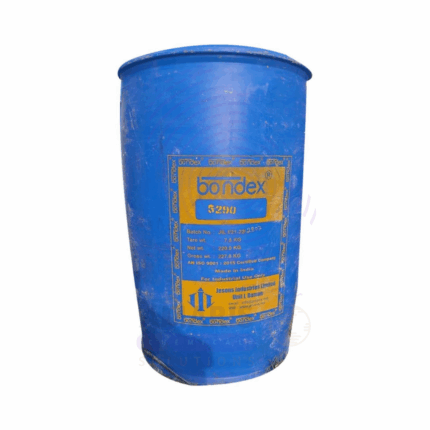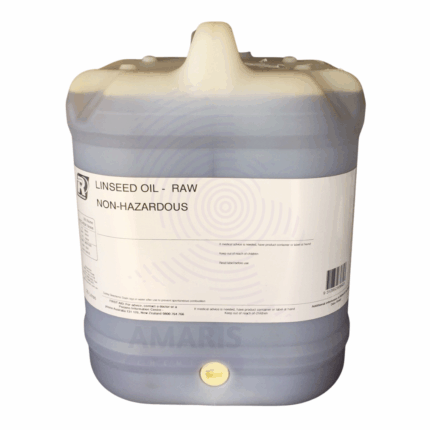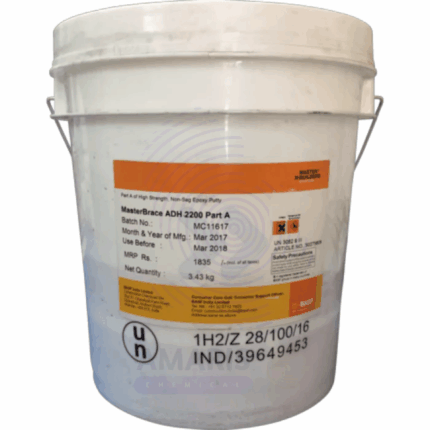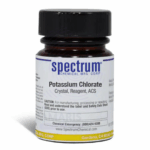
Potassium Chlorate Extra Pure
$ 18.00 Original price was: $ 18.00.$ 17.87Current price is: $ 17.87.
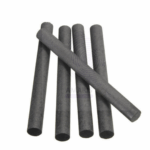
Electrode Carbon Rod
$ 13.99 Original price was: $ 13.99.$ 13.87Current price is: $ 13.87.
Sodium Silicate
$ 1.05 Original price was: $ 1.05.$ 0.97Current price is: $ 0.97.
Whatsapp Order
Sodium Silicate is a water-soluble, viscous alkaline liquid with the general formula Na₂SiO₃ (ratios vary). Commonly referred to as water glass or liquid glass, it appears as a clear to slightly cloudy solution. This 20-litre packaged product is known for its excellent adhesive, binding, and sealing properties. It is widely used in industrial, construction, detergent, and water treatment applications. Sodium silicate forms a glassy film upon drying and resists high temperatures and chemical attack, making it extremely versatile across many industries.
Description
Table of Contents
Toggle
Sodium Silicate
Primary Uses
- Construction & Civil Engineering
- Concrete Hardening: Penetrates and densifies concrete surfaces to increase durability.
- Soil Stabilization: Used in grouting and ground improvement for tunneling and foundation works.
- Fireproofing Material: Binds with mineral wool and vermiculite for fire-resistant coatings.
- Cement Additive: Enhances chemical resistance and bonding properties.
- Detergents & Cleaners
- Laundry Detergents: Acts as a builder to soften water and enhance cleaning power.
- Dishwashing Liquids: Prevents corrosion of metal surfaces in alkaline solutions.
- Industrial Cleaners: Degreases, emulsifies, and disperses oils and fats from surfaces.
- Metal Surface Cleaning: Removes scale, rust, and organic residues from machinery and equipment.
- Adhesives & Binders
- Corrugated Board Adhesives: Binds paper layers in cardboard production.
- Foundry Sand Binder: Used in the preparation of sand molds and cores.
- Refractory Cement Binder: Binds high-temperature materials in kiln and furnace applications.
- Water Treatment
- Boiler Water Treatment: Prevents corrosion and scale formation in industrial boilers.
- Wastewater Treatment: Clarifies water by coagulating suspended solids.
- pH Adjustment: Alkalizes acidic waste streams.
- Textile & Pulp Industry
- Bleaching Stabilizer: Stabilizes hydrogen peroxide during pulp and fabric bleaching.
- Sizing Agent: Improves the stiffness and strength of paper and textiles.
- De-inking Agent: Helps in recycling printed paper by loosening ink from fibers.
- Automotive & Engineering
- Radiator Sealant: Seals minor leaks in vehicle cooling systems.
- Exhaust Repair Compounds: Used in high-temperature repair pastes.
Secondary Uses
- Ceramics & Pottery
- Deflocculant: Reduces viscosity of clay slurries in slip casting.
- Glaze Suspension Agent: Improves dispersion and stability of ceramic glazes.
- Agriculture
- Silicon Supplement: Used experimentally to boost plant resistance to stress.
- Pesticide Carrier: Acts as an adjuvant in certain agrochemical formulations.
- Mining & Metallurgy
- Ore Flotation Agent: Controls pH and acts as a dispersant in ore processing.
- Refractory Coating Binder: Used in high-temperature metal processing equipment.
- Fire Protection
- Intumescent Coatings: Expands when exposed to heat, providing fire resistance.
- Passive Fire Barriers: Used in wall and ceiling coatings for fire compartmentalization.
- Household Products
- Laundry Bluing Base: Occasionally used as a component in traditional laundry preparations.
- Toilet Bowl Cleaners: Found in strong alkaline cleaners for scale removal.
- Arts & Crafts
- Sculpting and Mold Making: Used in creating solidifying molds for metal casting or plaster work.
- Paper Mâché Hardener: Improves rigidity and water resistance of paper-based structures.
- Laboratory & Research
- Silica Gel Precursor: Used in the preparation of desiccants and chromatography media.
- Chemical Experiments: Demonstrates chemical garden or crystal growth in educational settings.
KEY PRODUCT FEATURES
1. Basic Identification Attributes
- Chemical Name (IUPAC): Disodium metasilicate (common type)
- Common/Trade Name: Sodium Silicate, Water Glass, Liquid Glass
- CAS Number: 1344-09-8 (general form)
- HS Code: 2839.11.00
- Synonyms: Sodium silicate solution, Sodium water glass, Soluble glass
2. Physical & Chemical Properties
- Physical State: Viscous liquid solution
- Color & Odor: Clear to hazy; odorless
- Solubility: Fully miscible in water
- Specific Gravity: 1.35–1.55 (varies with ratio and solids content)
- pH (1% solution): ~11.3–12.5
- Solids Content: 38–45% by weight (for 45% grade)
- SiO₂/Na₂O Ratio: Commonly 2.0–3.3 depending on formulation
3. Safety & Hazard Attributes
- GHS Classification: Skin Irritant (Category 2), Eye Irritant (Category 2A)
- Toxicity: LD₅₀ (oral, rat) ~1150 mg/kg
- Exposure Limits: No established limits; handle with general ventilation
- Corrosivity: Alkaline—may damage skin, eyes, and mucous membranes
4. Storage & Handling Attributes
- Storage Conditions: Store in sealed containers; avoid freezing or extreme heat
- Container Type: 20-litre HDPE jerry cans, drums, or IBCs
- Shelf Life: 12–24 months under proper conditions
- Handling Precautions: Avoid contact with skin and eyes; do not mix with acids
5. Regulatory & Compliance Attributes
- REACH Registered
- FDA 21 CFR (Certain Grades) – Permitted as a boiler additive in food processing (indirect use)
- RoHS & SVHC Compliant
- TSCA Listed – USA
- Not classified as hazardous for transport (non-flammable liquid)
6. Environmental & Health Impact
- Biodegradability: Inorganic; not biodegradable but dilutes and neutralizes naturally
- Ecotoxicity: Moderately harmful to aquatic life in concentrated form
- Bioaccumulation: None expected
- Aquatic Impact: High pH may be harmful to fish and plant life if not neutralized
SAFETY HANDLING PRECAUTIONS
Safety Handling Precautions
- PPE Required: Alkaline-resistant gloves, goggles, protective clothing
- Handling Guidelines: Avoid breathing mist; use local ventilation if spraying
- Storage Measures: Keep container tightly sealed and upright
First Aid Measures
- Inhalation: Move to fresh air; seek medical attention if irritation occurs
- Skin Contact: Wash thoroughly with water; remove contaminated clothing
- Eye Contact: Flush with water for at least 15 minutes; seek immediate medical help
- Ingestion: Rinse mouth; do not induce vomiting; seek medical attention
Firefighting Measures
- Fire Hazards: Non-flammable; will not support combustion
- Extinguishing Media: Use media suitable for surrounding fire (water, CO₂, dry chemical)
- Hazardous Combustion Products: None known; stable under normal fire conditions
Related products
Bondex 5299
Bondex 5299 is a solvent-based, high-performance industrial adhesive formulated to provide strong, durable bonds on a wide variety of substrates such as metals, plastics, rubber, and composites. It appears as a clear to amber viscous liquid with a characteristic solvent odor. Known for excellent resistance to heat, moisture, and chemicals, Bondex 5299 cures by solvent evaporation to form a flexible, resilient bond. It is widely used in automotive, aerospace, electronics, and heavy machinery industries due to its reliable bonding strength and quick curing properties.
Lacitex
Lacitex is a high-quality natural latex concentrate derived from Hevea brasiliensis (rubber tree) latex. It is a milky, white colloidal suspension primarily used in the manufacture of latex-based products such as gloves, adhesives, coatings, and foam rubber. Lacitex offers excellent film-forming properties, elasticity, and tensile strength. It provides superior binding, water resistance, and flexibility in finished products, making it widely valued in various industrial and manufacturing applications.
Linseed Oil Alkali Refined
Linseed Oil Alkali Refined is a vegetable oil extracted from flax seeds and then refined using alkali treatment to remove impurities, free fatty acids, and gums. This refining process enhances the oil’s stability, color, and odor, making it suitable for industrial, artistic, and manufacturing uses. It is a drying oil known for its excellent film-forming properties, quick drying time, and good adhesion to surfaces. Alkali refined linseed oil is widely used in paints, varnishes, inks, and as a raw material in chemical industries.
Linseed Oil Raw
Linseed Oil Raw is the unrefined, natural oil extracted from flax seeds through cold pressing or solvent extraction. It contains natural impurities such as gums, waxes, and free fatty acids, giving it a darker color and stronger odor compared to refined oils. Raw linseed oil is a drying oil known for its excellent film-forming and adhesive properties. It is widely used in traditional wood finishing, oil painting, and industrial applications where natural and slow-drying oil is preferred.
Magpow Silicone Sealant
Magpow Silicone Sealant is a one-component, moisture-curing silicone-based sealant formulated for high-performance sealing, bonding, and insulating applications. It cures at room temperature when exposed to air moisture, forming a durable, flexible rubber-like elastomer. It adheres well to glass, metal, ceramic, plastic, and many construction materials. Commonly used in general construction, glazing, automotive, and household repair applications, Magpow Silicone Sealant offers excellent resistance to weathering, UV radiation, moisture, and temperature extremes.
Master Brace ADH
Master Brace ADH is a high-strength adhesive designed for bonding construction materials such as concrete, metal, wood, and stone. It is formulated to provide superior adhesion, fast curing, and excellent durability, making it suitable for both indoor and outdoor applications. The adhesive offers resistance to moisture, temperature variations, and mechanical stress, ensuring long-lasting bonds in demanding construction environments.
Sika Anchorfix 1
Sika Anchorfix 1 is a high-performance, two-component, fast-curing adhesive mortar designed for anchoring and fixing applications in concrete and masonry. It provides superior bond strength, chemical resistance, and durability, making it suitable for heavy-duty structural and non-structural fastening tasks. The product is easy to mix and apply, cures rapidly at various temperatures, and complies with international construction standards, ensuring reliable and long-lasting anchoring performance.
Sika Flexi Tape
Sika Flexi Tape is a flexible, high-strength sealing and repair tape designed for quick and durable sealing solutions. Made from a tough, elastic polymer film coated with an aggressive adhesive, it provides excellent adhesion to a variety of surfaces including metals, plastics, concrete, and wood. The tape is weatherproof, waterproof, and UV resistant, making it suitable for both indoor and outdoor applications. It is ideal for sealing leaks, patching holes, and reinforcing joints, offering a convenient and reliable alternative to liquid sealants.


 Preservatives(food)
Preservatives(food) Flavor Enhancers
Flavor Enhancers Acidulants
Acidulants Sweeteners
Sweeteners Antioxidants
Antioxidants Colorants(food)
Colorants(food) Nutraceutical Ingredients (food)
Nutraceutical Ingredients (food) Nutrient Supplements
Nutrient Supplements Emulsifiers
Emulsifiers
 Collectors
Collectors Dust Suppressants
Dust Suppressants Explosives and Blasting Agents
Explosives and Blasting Agents Flocculants and Coagulants
Flocculants and Coagulants Frothers
Frothers Leaching Agents
Leaching Agents pH Modifiers
pH Modifiers Precious Metal Extraction Agents
Precious Metal Extraction Agents
 Antioxidants(plastic)
Antioxidants(plastic) Colorants (Pigments, Dyes)
Colorants (Pigments, Dyes) Fillers and Reinforcements
Fillers and Reinforcements Flame Retardants
Flame Retardants Monomers
Monomers Plasticizers
Plasticizers Polymerization Initiators
Polymerization Initiators Stabilizers (UV, Heat)
Stabilizers (UV, Heat)
 Antifoaming Agents
Antifoaming Agents Chelating Agents
Chelating Agents Coagulants and Flocculants
Coagulants and Flocculants Corrosion Inhibitors
Corrosion Inhibitors Disinfectants and Biocides
Disinfectants and Biocides Oxidizing Agents
Oxidizing Agents pH Adjusters
pH Adjusters Scale Inhibitors( water)
Scale Inhibitors( water)
 Antioxidants(cosmetic)
Antioxidants(cosmetic) Emollients
Emollients Fragrances and Essential Oils
Fragrances and Essential Oils Humectants
Humectants Preservatives
Preservatives Surfactants(cosmetic)
Surfactants(cosmetic) Thickeners
Thickeners UV Filters
UV Filters
 Fertilizers
Fertilizers Soil Conditioners
Soil Conditioners Plant Growth Regulators
Plant Growth Regulators Animal Feed Additives
Animal Feed Additives Biostimulants
Biostimulants Pesticides (Herbicides, Insecticides, Fungicides)
Pesticides (Herbicides, Insecticides, Fungicides)
 Active Pharmaceutical Ingredients (APIs)
Active Pharmaceutical Ingredients (APIs) Excipients
Excipients Solvents(pharmaceutical)
Solvents(pharmaceutical) Antibiotics
Antibiotics Antiseptics and Disinfectants
Antiseptics and Disinfectants Vaccine Adjuvants
Vaccine Adjuvants Nutraceutical Ingredients (pharmaceutical)
Nutraceutical Ingredients (pharmaceutical) Analgesics & Antipyretics
Analgesics & Antipyretics
 Analytical Reagents
Analytical Reagents Solvents(lab)
Solvents(lab) Chromatography Chemicals
Chromatography Chemicals Spectroscopy Reagents
Spectroscopy Reagents microbiology-and-cell-culture-reagents
microbiology-and-cell-culture-reagents Molecular Biology Reagents
Molecular Biology Reagents Biochemical Reagents
Biochemical Reagents Inorganic and Organic Standards
Inorganic and Organic Standards Laboratory Safety Chemicals
Laboratory Safety Chemicals Specialty Laboratory Chemicals(Special Laboratory Equipment)
Specialty Laboratory Chemicals(Special Laboratory Equipment)
 Demulsifiers
Demulsifiers Hydraulic Fracturing Fluids
Hydraulic Fracturing Fluids Scale Inhibitors(oil)
Scale Inhibitors(oil) Surfactants(oil)
Surfactants(oil) Drilling Fluids
Drilling Fluids
 Dyes and Pigments
Dyes and Pigments Bleaching Agents
Bleaching Agents Softening Agents
Softening Agents Finishing Agents
Finishing Agents Antistatic Agents
Antistatic Agents
 Admixtures
Admixtures Waterproofing Agents
Waterproofing Agents Sealants and Adhesives
Sealants and Adhesives Curing Compounds
Curing Compounds Concrete Repair Chemicals
Concrete Repair Chemicals Anti-Corrosion Coatings
Anti-Corrosion Coatings
 Surfactants(cleaning)
Surfactants(cleaning) Builders
Builders Enzymes
Enzymes Solvents (Cleaning)
Solvents (Cleaning) Fragrances
Fragrances
 Electronic Chemicals
Electronic Chemicals Catalysts
Catalysts Lubricants
Lubricants Photographic Chemicals
Photographic Chemicals Refrigerants
Refrigerants Automotive chemicals
Automotive chemicals Pyrotechnic Chemicals
Pyrotechnic Chemicals
 Biodegradable Surfactants
Biodegradable Surfactants Bio-based Solvents
Bio-based Solvents Renewable Polymers
Renewable Polymers Carbon Capture Chemicals
Carbon Capture Chemicals Wastewater Treatment Chemicals
Wastewater Treatment Chemicals
 Pigments
Pigments Solvents(paint)
Solvents(paint) Specialty Coatings
Specialty Coatings Binders/Resins
Binders/Resins Additives
Additives Driers
Driers Anti-Corrosion Agents
Anti-Corrosion Agents Functional Coatings
Functional Coatings Application-Specific Coatings
Application-Specific Coatings
 Fresh Herbs
Fresh Herbs Ground Spices
Ground Spices Whole Spices
Whole Spices Spice Blends
Spice Blends Dried Herbs
Dried Herbs
 Leavening Agents
Leavening Agents Dough Conditioners
Dough Conditioners Flour Treatments
Flour Treatments Fat Replacers
Fat Replacers Decoratives
Decoratives Preservatives(baking)
Preservatives(baking)
 Plasticizers & Softeners
Plasticizers & Softeners Reinforcing Agents
Reinforcing Agents Adhesion Promoters
Adhesion Promoters Vulcanizing Agents
Vulcanizing Agents Antidegradants
Antidegradants Blowing Agents
Blowing Agents Fillers & Extenders
Fillers & Extenders Accelerators & Retarders
Accelerators & Retarders

